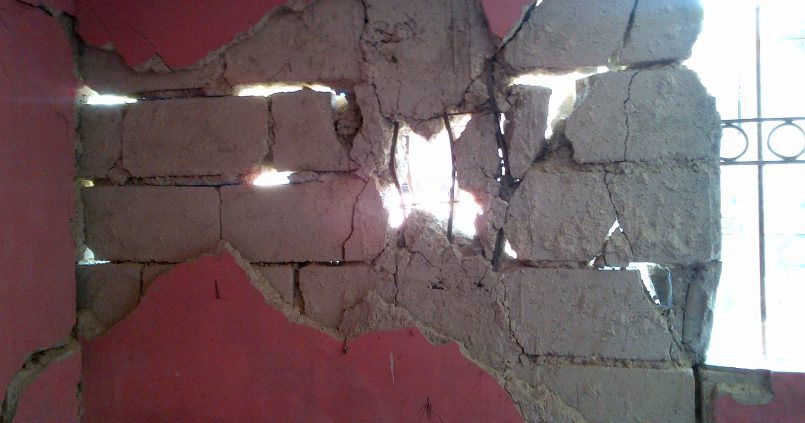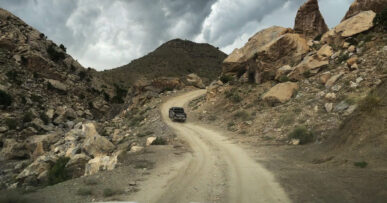- The 2010 Haiti Earthquake, Part 1
- The 2010 Haiti Earthquake, Part 2
- Miyamoto in Haiti: The Presidential Palace, A Fractured Haitian Icon
- Miyamoto in Haiti: Damage Assessment of the Japanese Embassy
- Miyamoto in Haiti: The Well-Oiled Relief Machine Rolling Through Haiti
- Miyamoto in Haiti: Inside a Heavily Damaged Building
- Miyamoto in Haiti: Visiting The Citadel
- Thirty Months in Haiti, Part 1
- Thirty Months in Haiti, Part 2
- Thirty Months in Haiti, Part 3
- Miyamoto in Haiti: A Morning and Afternoon of Hopeful Rebuilding
- Miyamoto in Haiti: School Rebuilding and Construction Continues
- Trente mois en Haïti, 1eme partie
- Trente mois en Haïti, 2eme partie
- Trente mois en Haïti, 3eme partie
- Miyamoto in Haiti: Visiting a Remote School Construction Site Near Cap-Haïtien
- Miyamoto in Haiti: Self-Sustaining Relief
- Miyamoto in Haiti: Love it or Hate it? Love it!
- Miyamoto in Haiti: Lycee de Cite Soleil Rehabilitation Project
- Miyamoto in Haiti: The Hopeful Road to Recovery
- A Day in the Haiti Disaster Zone
- Kidnappers & Disaster
- A Disaster Week in Haiti
Inside a Heavily Damaged Building in Haiti
October 12, 2012
 Mark Broughton and I entered a large, three-story, red-tagged concrete apartment building. A red tag means no entry is allowed. The structure had been damaged heavily by the 2010 earthquake and was considered too dangerous to enter. The Pan American Development Foundation (PADF) had asked us to investigate this building in Delmas 32 in Haiti as part of our ongoing housing assessments.
Mark Broughton and I entered a large, three-story, red-tagged concrete apartment building. A red tag means no entry is allowed. The structure had been damaged heavily by the 2010 earthquake and was considered too dangerous to enter. The Pan American Development Foundation (PADF) had asked us to investigate this building in Delmas 32 in Haiti as part of our ongoing housing assessments.
We’ve performed a lot of activities in the past two and a half years here. We assessed the damage of over 5,000 buildings and repaired over 1,500 less-damaged yellow-tagged houses. I have special feelings for this poor, densely packed community. I have met and built relationships with many residents, masons, engineers, children and even gang members.
It was the middle of the day, and the strong Caribbean sun was right above us. We entered the dark ground floor. After my eyes had adjusted to the gloomy light of the windowless room, I looked around for damage. Strangely, I didn’t see any. We climbed to the second floor, where we found severely cracked walls and columns in the many empty rooms. The heat inside the apartment was unbearable, and sweat ran down my face. The peculiar odor of rotten food mixed with dust and sweat was strong in the large, dark room.
 I found three columns that had been ruptured by the earthquake, which presented an immediate collapse hazard. It was a miracle that this building had remained standing for the past few years. A small, magnitude 3 event could take down the building now. There had been eight households in this building, and they had all evacuated. The former residents have been living in the Acra tent city since then, more than two and a half years now. I saw several small boys and girls playing just outside the ruptured columns. I learned that they were children from a small house next to this disaster waiting to happen.
I found three columns that had been ruptured by the earthquake, which presented an immediate collapse hazard. It was a miracle that this building had remained standing for the past few years. A small, magnitude 3 event could take down the building now. There had been eight households in this building, and they had all evacuated. The former residents have been living in the Acra tent city since then, more than two and a half years now. I saw several small boys and girls playing just outside the ruptured columns. I learned that they were children from a small house next to this disaster waiting to happen.
Repairing columns isn’t difficult, and doesn’t require extensive effort, but seismic strengthening also must be done. This was a large, dangerous concrete building without any seismic-resistive system. We estimate that hundreds of similar red-tagged apartments or houses still exist in Delmas 32. This is a serious social safety issue. I believe that without addressing these red-tagged structures, the community plan is incomplete.
As an example repair approach we would develop an engineering process. This involves getting approval from Public Works for the methodology and engineering, manage the process, and supervise the contractors. This operation would be highly technical and require a written proposal to develop a strategic plan to address this issue for the entire Delmas 32 area and beyond. Without this plan many people could die from small earthquakes or even midsize hurricanes, because these buildings are large and contained many households. The cost of mitigation per household or per capita would be efficient.
We should also consider a plan that includes owner financial participation rather than relying on donor money completely. We may be able to build an economically sustainable model that will provide safety, income and job growth in the community.
 Mark and I hurried out of the precariously unsafe building. The longer we stayed, the higher the probability of building collapse while we were inside. We rushed out onto the dusty street into the hot afternoon sun.
Mark and I hurried out of the precariously unsafe building. The longer we stayed, the higher the probability of building collapse while we were inside. We rushed out onto the dusty street into the hot afternoon sun.
Our mission is critical for the little kids and everyone else in the area. People are counting on us.



